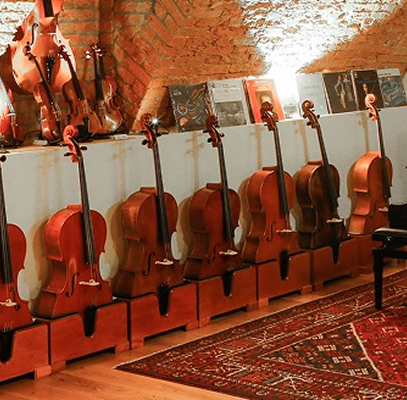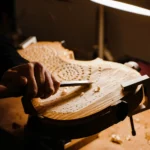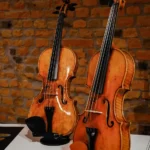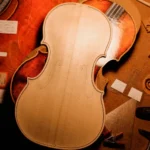Our Best Tips to Master The Violin Practice
Back to BlogPlaying an instrument has always been a special talent for many people. Feeling the music through your fingers when you play is fun and fulfilling. It is just as rewarding when you master the instrument you enjoy. Violin practice requires patience. To improve, you must practice regularly. You might practice scales, play music games, or do other exercises to build up your skills.
Our Best Tips to Master The Violin Practice
- Establish a Consistent Practice Routine: Set aside dedicated time each day for practice. Consistency is key to progress. Even short, focused practice sessions can yield better results than sporadic, longer sessions.
- Warm Up and Stretch: Prior to playing, warm up your muscles and stretch to prevent injuries. Focus on gentle exercises to loosen your fingers, wrists, and arms.
- Focus on Technique: Pay attention to proper posture, hand position, bow grip, and bowing technique. Work on exercises and scales to improve finger dexterity, intonation, and bow control. Consult with a teacher to ensure correct technique.
- Break Down Challenging Passages: Identify difficult sections in your music and break them down into smaller, manageable parts. Practice these sections slowly and gradually increase the tempo as you become more comfortable.
- Practice with a Metronome: Use a metronome to develop a steady sense of rhythm and timing. Start at a slower tempo, and gradually increase the speed as you master the passage.
- Record Yourself: Use a recording device or smartphone to record your practice sessions. Listen back to identify areas for improvement, such as intonation, tone quality, or phrasing.
- Focus on Musical Expression: While the technique is important, strive to bring out the musicality in your playing. Experiment with dynamics, articulation, and phrasing to convey emotion and tell a story through your music.
- Take Breaks: Avoid practicing for long stretches without breaks. Take short breaks to rest your mind and body, allowing for better concentration and retention of information.
- Seek Feedback and Guidance: Regularly take lessons from a qualified violin teacher who can provide feedback, guidance, and personalized exercises to address your specific needs and goals.
- Enjoy the Process: Remember to enjoy the journey of learning the violin. Celebrate your progress and find joy in the music you create. Stay motivated by exploring different musical styles and pieces that inspire you.
By incorporating these tips into your practice routine, you can make significant strides in your violin playing. Remember, practice with patience, perseverance, and a passion for continuous improvement. Happy practicing!
Choose your bowings and fingerings wisely, and then stick to them at all times when practicing. If you change your bowings or fingerings once you choose the ones that feel comfortable for you, you will learn the piece faster, and when you have to relearn it, it will also be faster.
Protecting your violin and its accessories is also crucial. A high-quality instrument case can help you avoid scratches and dust, and it’s an essential tailor-made cushion for your instrument. The violin market has plenty of cases and bags; some have compartments or pockets for storing items such as rosin, and shoulder rests.
A check-up is necessary. An instrument must be in good working order and properly cleaned and maintained, just like the human body. Just like you go to the doctor, take your instrument to a violin maker or luthier.
Now, 3 challenging violin pieces for you to practice
Ernst’s Variations on “The Last Rose of Summer”
Some violinists believe that they have already mastered Paganini’s difficult works, so they don’t bother learning Ernst’s pieces because they are much harder to play. For example, “Variation on ‘The Last Rose of Summer'” is considered one of the most difficult solo pieces for violin because it has almost impossible demands, including fingered harmonics and left-hand pizzicato on top of tricky arpeggios.
Bach’s Chaconne from Partita in d minor
Besides writing some of the most beautiful music known to mankind, Bach also wrote some of the most fiendish pieces for solo violin. While all of his sonatas and partitas are known for their difficulty, the concluding Chaconne from the Partita no. 2 in d minor takes the cake.
Sivan’s transcription of the Liszt b minor sonata for solo violin
The b minor sonata by Franz Liszt commands great respect in the piano world. Its horrifying pianistic difficulties make it one of the most difficult pieces in the standard repertoire.









